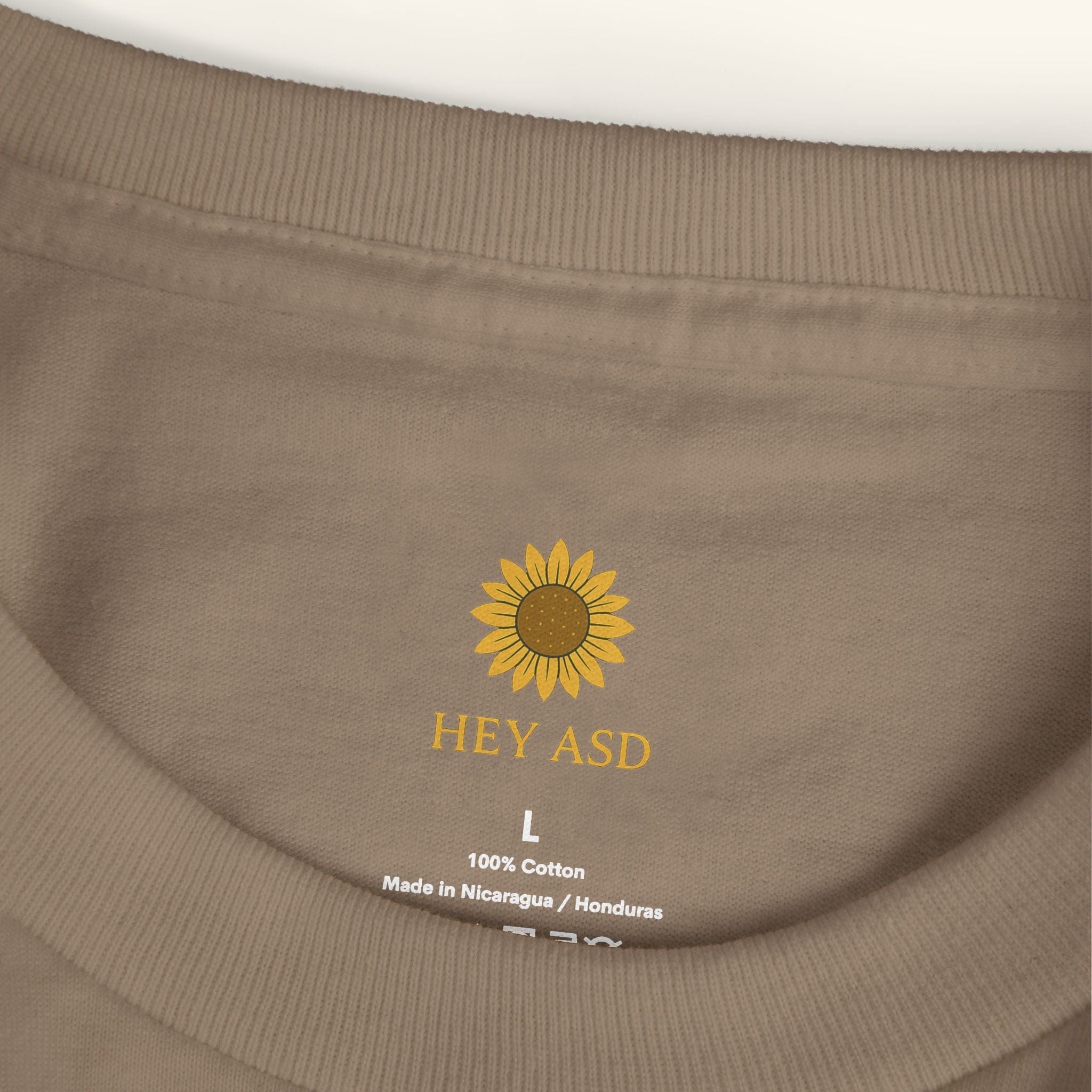Are Autistic People Rude? Understanding the Misunderstanding
Autistic people are often misread as cold or rude, but the truth is far more human. This guide unpacks how sensory differences, communication styles, and social misunderstandings create the myth of the “rude autistic person,” and what we can do to build empathy instead.

Written by the HeyASD Editorial Team
Autism is a neurodevelopmental condition that shapes how a person experiences the world — through unique sensory processing, communication, and social interaction. For many autistic individuals, sounds may feel sharper, lights too bright, or certain textures overwhelming. These sensory differences are core to how we navigate our environment and connect with others.
Autism spectrum disorder is called a spectrum because it presents in many different ways: no two autistic people are exactly alike. Some may struggle with social cues or prefer direct communication; others may have passionate interests or express emotions differently. What unites us is not a single set of traits, but a shared experience of being misunderstood in a world that isn't built for neurodivergent minds. By learning more about how autism spectrum disorder affects perception and communication, we can move beyond stereotypes and toward genuine understanding, empathy, and connection.
Understanding Autistic Behavior
Autistic behavior is often misunderstood by neurotypical people, especially when it comes to interpreting social cues and communication styles. For example, an autistic person might interrupt a conversation—not out of rudeness, but because they're excited to share their thoughts before they forget them. They might find themselves in the middle of a conversation and struggle to navigate the flow. Similarly, avoiding eye contact is a common autistic trait, but it's usually about managing sensory input or feeling comfortable, not about being disrespectful.
Many autistic individuals communicate in ways that are direct, honest, and sometimes more literal than what neurotypical people expect. This can come across as blunt or abrupt, but it's simply a different way of expressing oneself. Differences in processing social cues, understanding body language, or responding to group dynamics can all influence how an autistic person behaves in social situations.
By recognizing that autistic behavior often stems from neurological differences rather than intentional disregard for social norms, we can create more supportive and inclusive environments. Embracing a variety of communication styles and being open to different ways of interacting helps everyone—autistic and neurotypical people alike—connect more meaningfully.
Let’s Talk About the “Rude” Label
Why autistic people are so often misunderstood
There are many aspects to why autistic people are so often misunderstood. One key reason is that an autistic person's behavior may seem rude to others due to differences in interpreting and responding to social norms. Autistic individuals often experience challenges faced in navigating social expectations, which can make their actions appear out of step with what is typically expected. When overwhelmed, autistic individuals may feel a meltdown brewing, and they may not be aware that their behavior is considered rude because they are often not taught unwritten social rules. These misunderstandings are rarely intentional; rather, they stem from differences in communication, sensory processing, and executive functioning.
The impact of being misread as cold, blunt, or stand-offish
When autistic people are misread as cold, blunt, or stand-offish, it is often because their behavior does not align with conventional social norms. Black and white thinking, a common cognitive style among autistic individuals, can influence both the autistic person's behavior and how others interpret it. This way of thinking means situations are often seen as either right or wrong, with little room for nuance, which can further complicate social interactions and lead to more misunderstandings.
It is important to note that autistic people experience emotions at the same level as neurotypical people, but may express or process these emotions differently.
Lived experience vs public perception
The lived experience of autistic individuals is shaped by the ongoing challenges faced in being understood by others. The behaviors of an autistic child, for example, are often misinterpreted as rude or disrespectful, when in fact they are manifestations of differences in communication style and sensory sensitivities. While their intentions are rarely to offend, the gap between their internal experience and public perception can be significant. Many aspects of autistic behavior, such as direct communication or difficulty with eye contact, are frequently misinterpreted, leading others to assume they are intentionally being rude. The anxiety that arises from social misunderstandings can lead to behaviors that others view as rude, but are often unintentional. Recognizing these challenges is essential for fostering empathy and reducing misperceptions.
Direct Doesn’t Mean Disrespectful
Many autistic folks value honesty and clarity, and their communication style often differs from that of neurotypical people. For autistic individuals, being truthful is important for their own good, as honesty helps avoid misunderstandings and builds trust in relationships. This directness is not meant to be hurtful or dismissive; rather, it reflects a preference for clear and straightforward communication. Additionally, autistic people may skip small talk—not out of rudeness, but as a way to be efficient and focused in conversation.
While neurotypical adults often expect certain social niceties such as small talk to build rapport, autistic individuals might see such exchanges as unnecessary or exhausting. This difference in social expectations can lead neurotypical people to mistakenly interpret the absence of small talk as dismissiveness or downright rudeness. It is important to recognize that both autistic and neurotypical people experience similar emotions, including frustration or impatience, but they may express these feelings differently based on their communication styles and social understanding. In fact, both groups experience the same things—such as jealousy, impatience, or judgment—but autism influences how these feelings are expressed. Furthermore, neurotypical social norms are not universal; what is considered polite or acceptable in one culture or group may not be so in another.
Autistic individuals navigate social behaviors and societal norms in their own way, which may not always align with neurotypical expectations but are no less valid. Understanding these differences helps foster empathy and reduces misinterpretations of autistic behavior as rude or inappropriate.
How to Bridge the Gap
Be Clear & Direct
We appreciate clear and direct communication. Avoiding sugarcoating or ambiguous language helps reduce confusion and clarifies expectations. Being explicit about your intentions and feelings prevents misunderstandings and fosters genuine interactions. Plainly stating your thoughts creates a comfortable and respectful dialogue.
Don’t Assume
Please ask rather than assume when interacting with us. Because social cues and nonverbal signals can be hard for us to interpret, seeking clarification shows respect and helps avoid misjudging our thoughts or feelings. This approach builds trust and acknowledges that everyone's experience is unique.
Create Space
Allow space for slower or alternative communication styles to accommodate different processing speeds and sensory preferences. We might need extra time to process information or prefer written communication like texting or emails over face-to-face conversations. These accommodations reduce anxiety and sensory overload, making it easier for us to express ourselves fully.
Respect Boundaries
Respect our boundaries, even if they differ from typical social norms. Avoiding eye contact, needing physical space, or taking breaks from social interaction are ways we express comfort or discomfort. Honoring these boundaries without judgment creates a safe and supportive environment, preventing misunderstandings that might otherwise be seen as rude.
Why Social Cues Don’t Always Translate for Autistic People
Eye contact, tone, and body language are interpreted differently. Autistic individuals may have difficulty interpreting nonverbal cues and facial expressions, which are key aspects of social communication. Differences in social communication and social interactions can lead to misunderstandings, as autistic people may not pick up on subtle social signals or may respond in ways that seem unusual in certain social settings. Receptive language challenges can also affect how autistic individuals understand and respond to social cues, making it harder to interpret what others mean.
Sensory overload can look like zoning out or ignoring someone, especially in busy social settings where multiple social interactions and sensory stimuli occur at once. For many of us, this overwhelming flood of input can make it hard to stay present or respond as expected. Sensory overload can cause an autistic individual to withdraw from social situations, which can be seen as rude or disinterested by others. When this happens, it's not that we are being rude or disinterested; rather, our brains are working hard to manage the intense sensory experience.
“Delayed” responses are often processing—not avoidance. Literal thinking can also play a role, as we may take language at face value and need extra time to interpret figurative speech or ambiguous statements. Many autistic people feel more comfortable when they understand the purpose behind a request or social rule.
These communication challenges can affect how quickly and accurately we respond in conversations.
When Words Feel Safer Than Faces
Many of us prefer writing or texting to talking, as these communication methods can feel more comfortable and clear. They allow us to express our thoughts without the immediate pressure of face-to-face interaction, which can sometimes be overwhelming due to sensory sensitivities or difficulties processing verbal cues.
Autistic-led communities—whether online spaces, group chats, or local meetups—can offer comfort without pressure. These spaces are where we find shared understanding, swap strategies, and support one another in ways that feel natural and affirming.
Sometimes, we might avoid confrontations or come across as abrupt—not because we want to be unkind, but because social situations can be challenging to navigate. When misunderstandings happen, support groups often turn these into teachable moments focused on empathy and education rather than judgment.
Building meaningful connections matters deeply to us. It fosters empathy, respect, and genuine relationships that honor diverse communication styles. These connections help bridge the gap between autistic and neurotypical people, promoting mutual understanding and acceptance.
Masking—hiding our autistic traits to fit in—adds another layer of complexity. It can make communication more confusing both for us and those around us, as masking is exhausting and may lead to misunderstandings or misinterpretations.
Understanding Non-Verbal Communication in Autism
Non-verbal communication plays a crucial role in how autistic individuals interact with the world around them. Many autistic people may struggle to interpret and employ facial expressions, body language, and other non-verbal cues, which can lead to misunderstandings in social situations. For instance, while neurotypical individuals often rely on subtle gestures or expressions to communicate emotions, autistic individuals may focus on the literal meanings of words rather than the accompanying non-verbal signals. This can make it challenging for them to gauge the emotional state of others or to convey their feelings effectively.
Furthermore, the way autistic individuals express emotions non-verbally can differ significantly from societal expectations. An autistic person might appear less expressive or have a flat affect, leading others to misinterpret their emotional engagement. It's essential to recognize that these differences in expression do not indicate a lack of emotion but rather reflect a unique communication style. By understanding and appreciating these distinctions in non-verbal communication, we can foster more inclusive environments that accommodate diverse ways of interacting.
Differences in processing sensory input and their impact on communication
When it comes to processing sensory input, autistic individuals often experience the world in ways that can significantly affect their communication. Sensory overload can lead to heightened stress and discomfort, making it difficult for them to focus on conversations or engage with others. For instance, in a noisy or crowded environment, an autistic person may struggle to hear or process spoken words, which can result in misunderstandings or delayed responses. This is not a reflection of their ability to communicate but rather an impact of sensory processing challenges that many autistic people face.
| Sensory Input Type | Autistic Experience | Potential Communication Impact |
|---|---|---|
| Auditory | Heightened sensitivity to background noise | Difficulty hearing spoken words, leading to confusion |
| Visual | Overwhelming visual stimuli | Difficulty maintaining eye contact or processing non-verbal cues |
| Tactile | Sensitivity to touch or certain textures | Discomfort during physical interactions, possibly leading to withdrawal |
Additionally, the way autistic individuals process sensory information can also influence their emotional responses. For example, an autistic person may react more strongly to sensory stimuli than a neurotypical individual, leading to heightened emotions that can be difficult to articulate. Recognizing these differences in sensory processing can help others understand the communication challenges that arise, ultimately fostering patience and empathy in social interactions.
The Double Empathy Problem: A Two-Way Street in Understanding
The Double Empathy Problem highlights the mutual misunderstandings that can occur between autistic and neurotypical individuals. This concept suggests that the difficulties in communication are not solely the responsibility of one group; rather, both sides may struggle to understand each other's perspectives. Autistic individuals often find it challenging to interpret the social cues and emotional expressions of neurotypical people, while neurotypical individuals may misread the directness or bluntness of autistic communication as rudeness.
This misunderstanding can create a cycle of frustration and hurt feelings, as both parties may fail to appreciate the unique strengths and communication styles of the other. By recognizing that empathy is a two-way street, we can work toward fostering a greater understanding of each other's experiences. This involves actively listening, seeking clarification, and being open to different ways of expressing emotions and intentions. Embracing the idea that both autistic and neurotypical individuals have valuable insights to share can lead to more meaningful interactions and deeper connections.
You’re Not Wrong for Feeling Hurt—But There’s a Bigger Picture
If an interaction feels off, it's okay to notice that. Sometimes what feels off is the result of autistic traits expressed in ways that can be misunderstood as rudeness or disinterest.
However, labeling us as rude asd without curiosity or understanding can shut down the possibility of meaningful connection. Autistic adults and children express our traits in many diverse ways across the spectrum, including those who may present with more subtle or masked traits. Instead of seeing these behaviors as simply “rude,” it helps to recognize them as different needs and communication styles.
Our families, caregivers, and support networks play crucial roles in helping us navigate social situations. The perspective of the autism parent is especially important, as they often face misunderstandings and stereotypes while supporting their autistic child through overwhelming situations. Focused interests, sensory sensitivities, and difficulties with social cues often influence how we engage. Behaviors like missing subtle social signals or not following unwritten rules usually come from a lack of awareness, not disregard. Overwhelming sensory or social situations may cause reactions that seem abrupt, distant, or even downright rude to neurotypical observers.
Importantly, we do experience empathy deeply, even if we express it differently. Recognizing that our behaviors arise from neurological differences rather than willful disrespect helps foster patience, empathy, and acceptance.
Embracing the diversity within our community and appreciating our whole life experiences allows for more meaningful and respectful connections. Through education, support, and open-mindedness, teachable moments become opportunities for growth, helping us learn to navigate social expectations in ways that honor our authentic selves.
Diagnosis and Support: Why They Matter
Receiving an autism diagnosis can be a turning point, bringing relief and clarity. It helps us and our families understand why certain social situations or communication styles feel challenging. Diagnosis opens doors to resources, therapies, and support networks that make a real difference.
Family members and medical professionals play key roles in offering encouragement and practical help, such as using visual aids or adapting communication styles so everyone can communicate effectively. Addressing mental health is crucial too, as anxiety and depression often accompany autism. Early support helps us thrive, not just cope, in a world not always built for our needs.
Autistic people aren't rude—we just communicate differently. What looks like bluntness or detachment is often honesty, sensory overwhelm, or a different way of showing care. The more we understand and respect those differences, the stronger our connections become.
Many autistic adults find connection and understanding through peer communities, online forums, friendships, content creators, and mutual support networks rather than formal groups. These spaces allow us to share experiences, learn from one another, and build meaningful relationships that honor our authentic selves.
Advocacy and Education: Changing the Conversation
Advocacy and education are powerful tools for transforming how society views autism and autistic individuals. When we share personal experiences and promote autism awareness, we help break down harmful stereotypes—like the myth that we lack social skills or are intentionally rude. Education leads to better understanding, supports mental health, and opens doors to resources and opportunities.
By championing acceptance and inclusion, we address not only social challenges but also health issues often overlooked. Changing the conversation means listening to autistic voices, challenging outdated ideas, and working together to build a world where everyone's differences are valued.
Join Hundreds of Autistic Adults Feeling
More Comfort in Their Own Skin
Use code WELCOME10 for 10% off your first order.
Start Your Comfort JourneyFinal Thoughts: Moving Beyond the “Rude” Myth
To truly move beyond the 'rude' myth associated with autism and rudeness, it's essential to shift perspectives on autism and autistic individuals. What might seem like rudeness is often a difference in communication styles, literal or rigid thinking, or a response to overwhelming sensory input—not a lack of care or social skills.
We aren't living in our own world; we're navigating a world that doesn't always meet our needs or align with how we process social cues and communication.
Many of us experience challenges with subtle social cues like body language, facial expressions, and tone of voice, which can lead to misunderstandings. Sensory overload and executive functioning difficulties can cause behaviors neurotypical people might see as abrupt or disrespectful. But these actions usually come from neurological differences, not intentional rudeness.
It's important to recognize that we experience empathy and emotions deeply, even if expressed differently. Our directness and honesty, sometimes seen as blunt or rude, are sincere attempts to communicate clearly and avoid confusion. Avoiding eye contact isn't disinterest but a sensory or social processing difference.
By fostering understanding, embracing diverse ways of interacting, and making accommodations, we can create a more inclusive society that respects and values the autistic community. This includes clear communication, respecting boundaries, and allowing alternative communication styles. Support networks, education, and self-advocacy empower us to navigate social settings while staying true to ourselves.
Moving from awareness to genuine acceptance means challenging misconceptions and celebrating the unique strengths and perspectives we bring to communities. When you listen to autistic voices and learn from our experiences, you build empathy and create meaningful connections that go beyond stereotypes.
At HeyASD, we understand that “rude” is rarely the whole story. Our mission is to design products and resources that prioritize autistic comfort rather than conformity, because everyone deserves to feel seen, supported, and understood. Together, let's move forward with empathy, acceptance, and a commitment to seeing the whole person—not just the stereotype.
On This Page
Frequently asked questions
How can I better understand autism communication challenges to avoid misinterpreting someone's behavior?
What are some sensory-friendly living tips that can help reduce overwhelm for autistic individuals?
How can I support autism social skills development in a kind and patient way?
What are common signs of autistic behavior that might be misunderstood as rudeness?
Are there sensory tools or calming items that can help autistic people feel more comfortable in social settings?
How can I adjust my communication style to be more inclusive and supportive of autistic individuals?
What disability inclusion strategies can workplaces use to create a welcoming environment for autistic employees?
How can I recognize when sensory overload is affecting an autistic person's behavior?
Can Autism-themed decor or clothing help promote awareness and acceptance in my community?

About the HeyASD Editorial Team
Autistic‑owned • Values‑led • Sensory‑friendly design
We are autistic creators, writers, and advocates dedicated to producing resources that are practical, sensory-aware, and grounded in lived experience. Our mission is to make information and products that support the autistic community accessible to everyone, without jargon or condescension. Learn more about our team.
This article is written from lived autistic experience and an evidence-aware perspective. It is for general informational purposes only and should not be taken as medical, legal or therapeutic advice.
Always consult a qualified clinician or occupational therapist for individual needs and circumstances.

About Our Autism Blog
HeyASD isn’t just a store, it’s a calm, supportive space created by and for autistic adults. Our blog shares sensory-friendly tips, identity-affirming stories, and heartfelt resources for navigating life as an autistic person. Whether you're late-diagnosed, exploring your needs, or supporting someone you love, you're welcome here.
Thank you for reading. We hope these resources bring comfort and clarity.





































